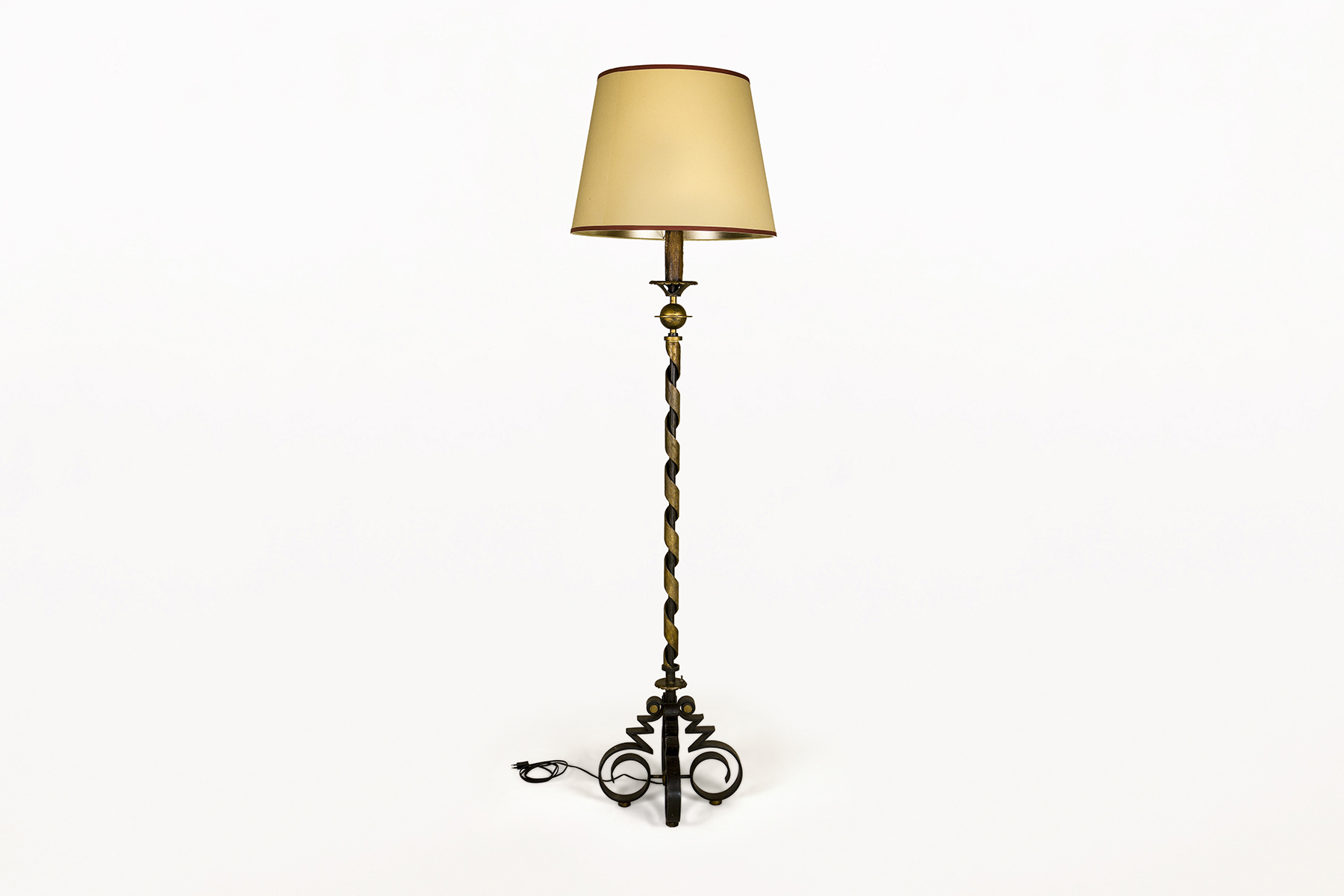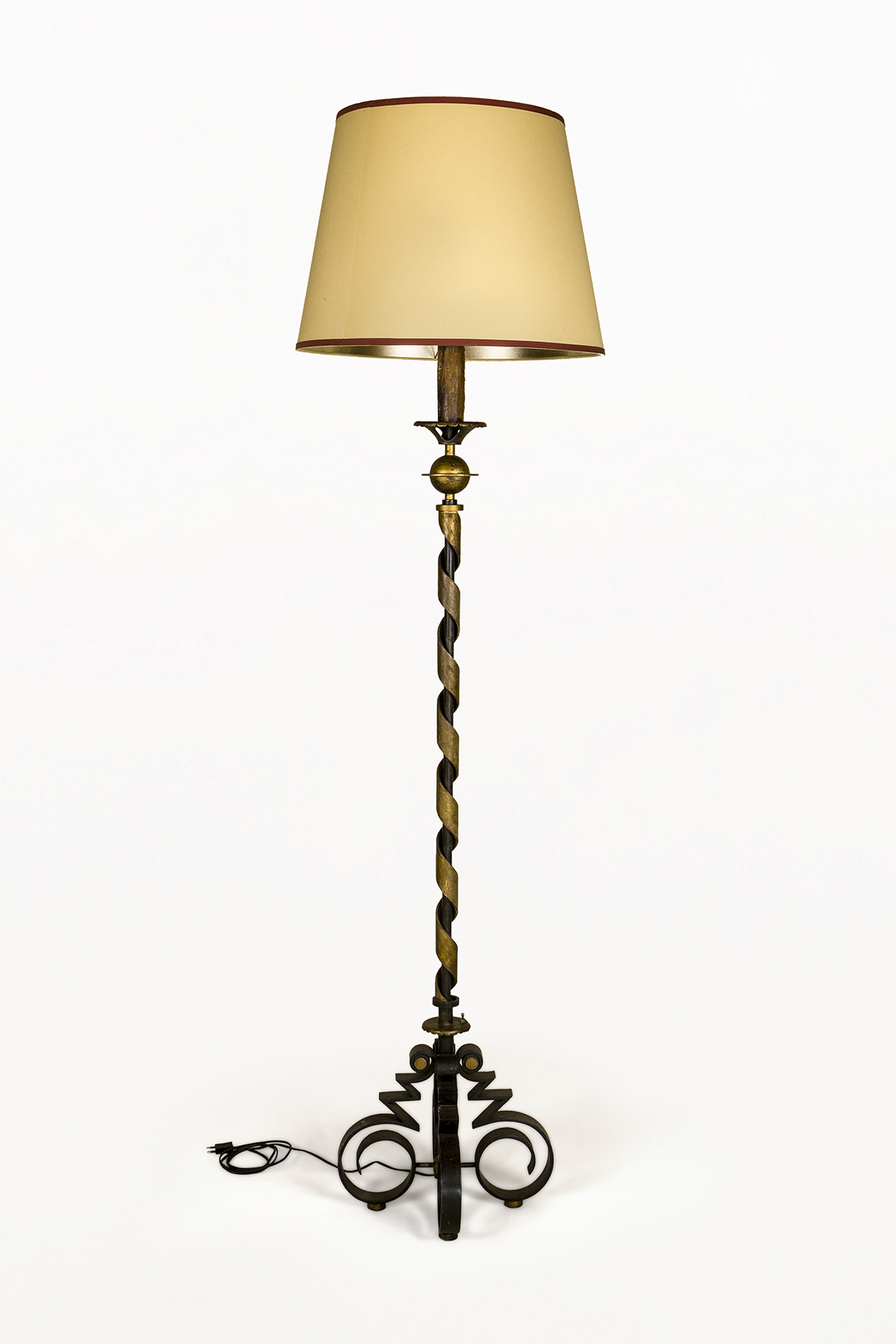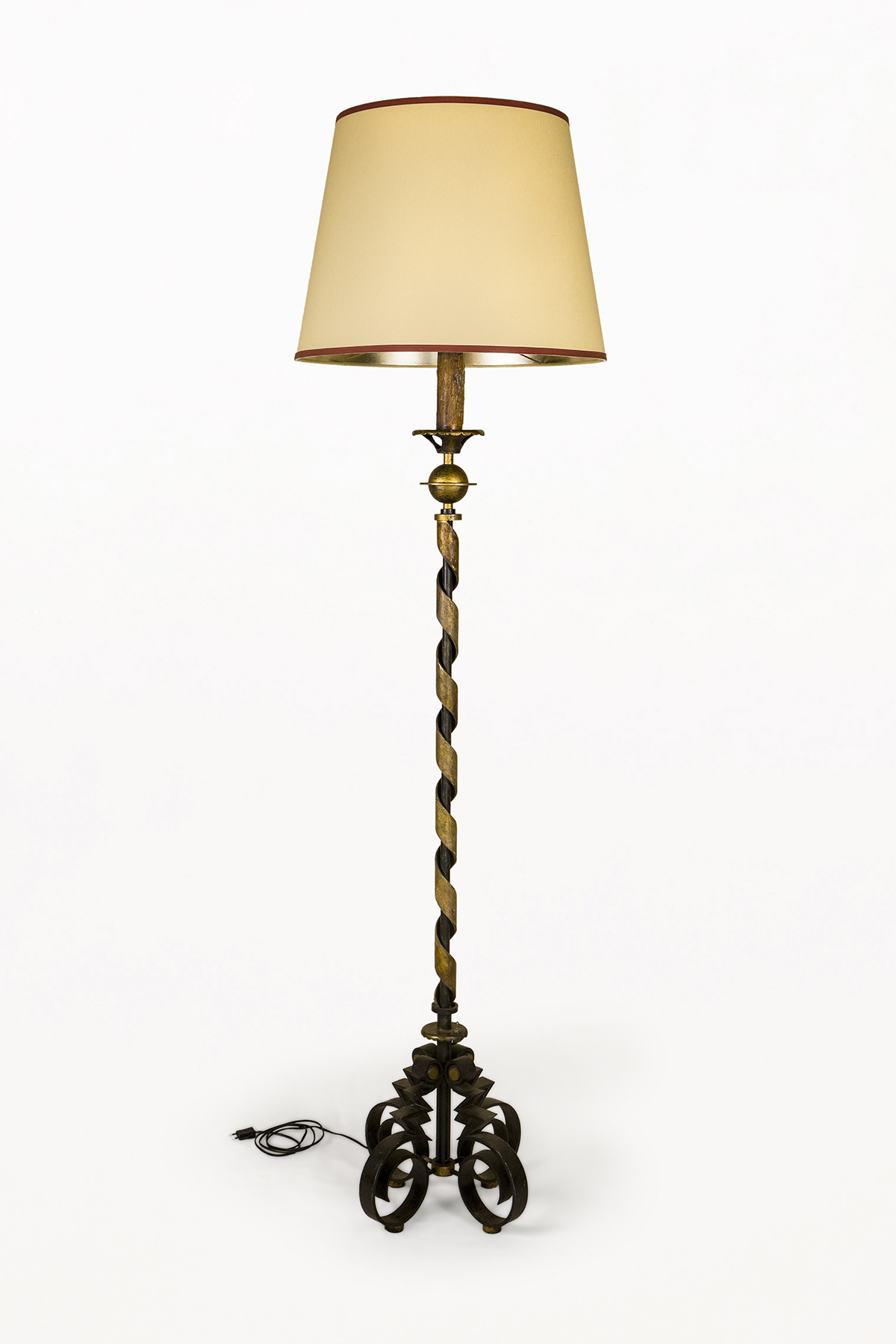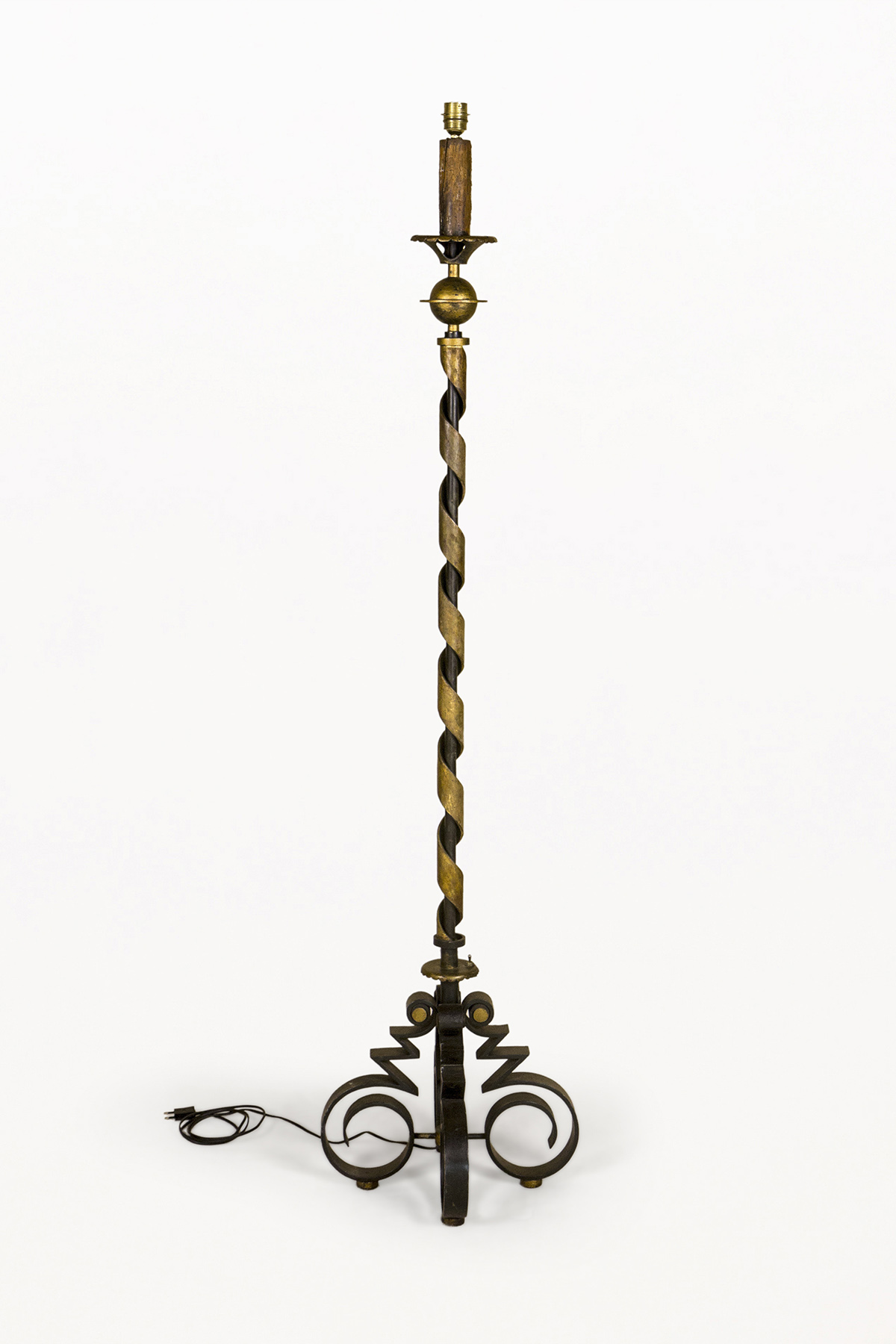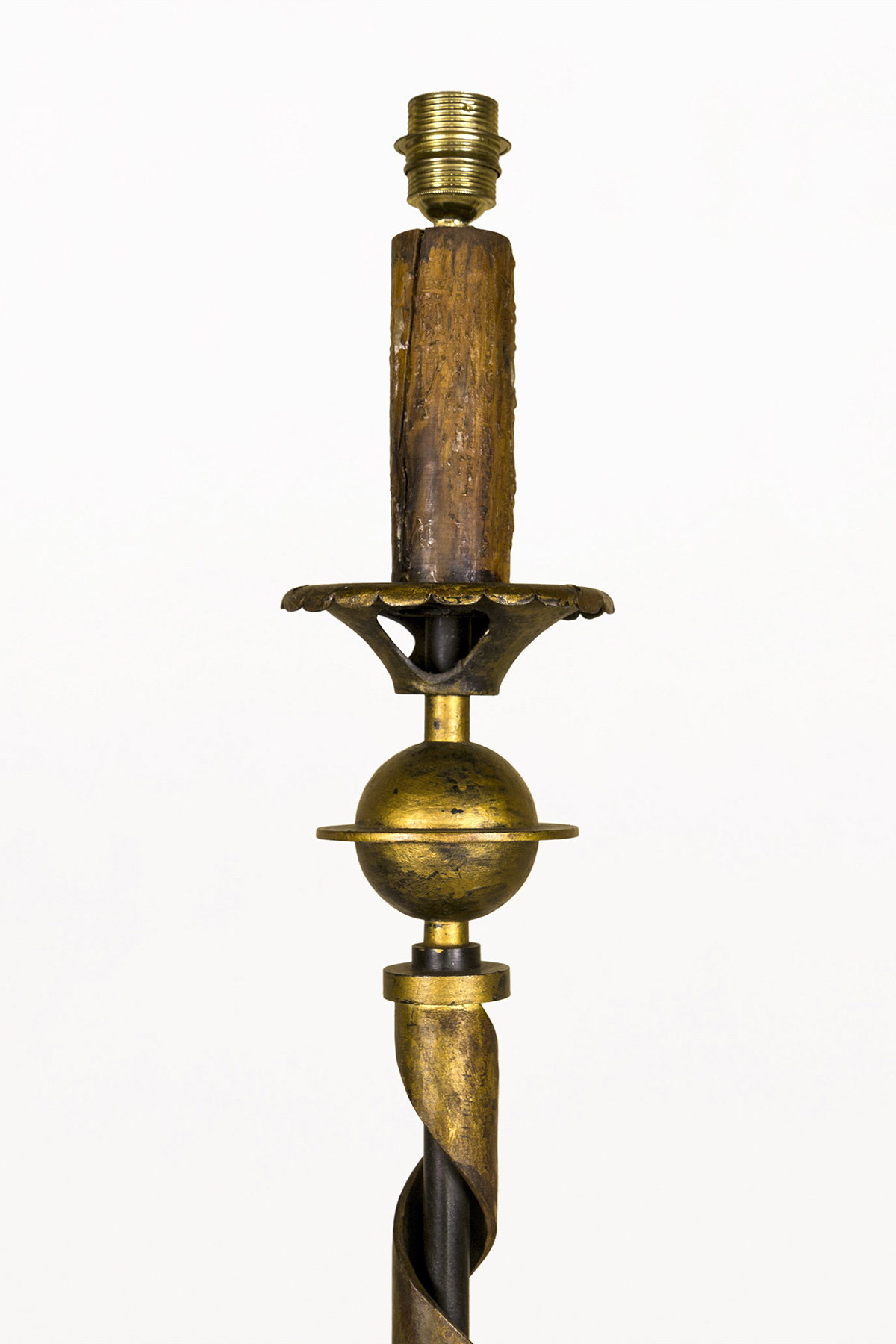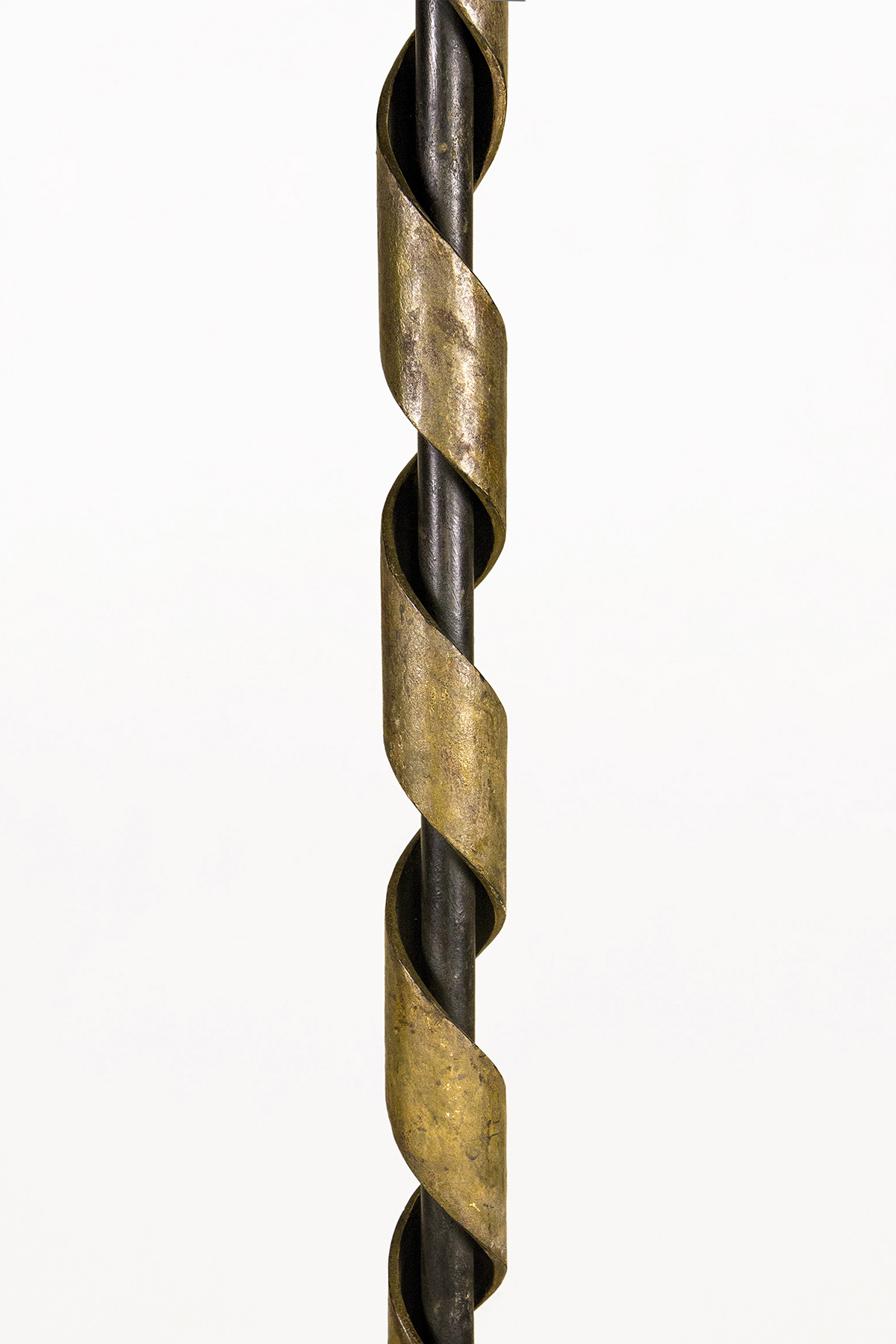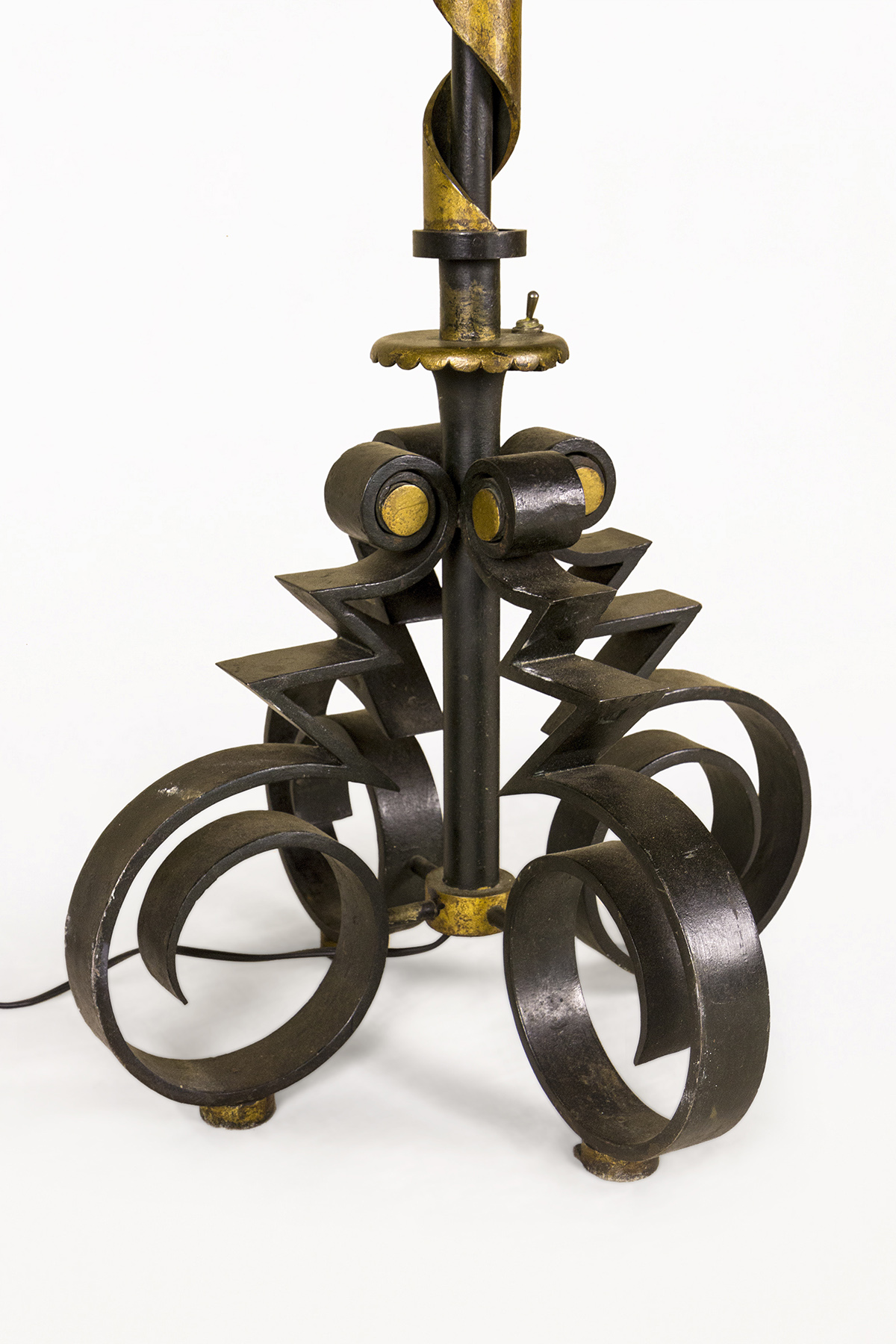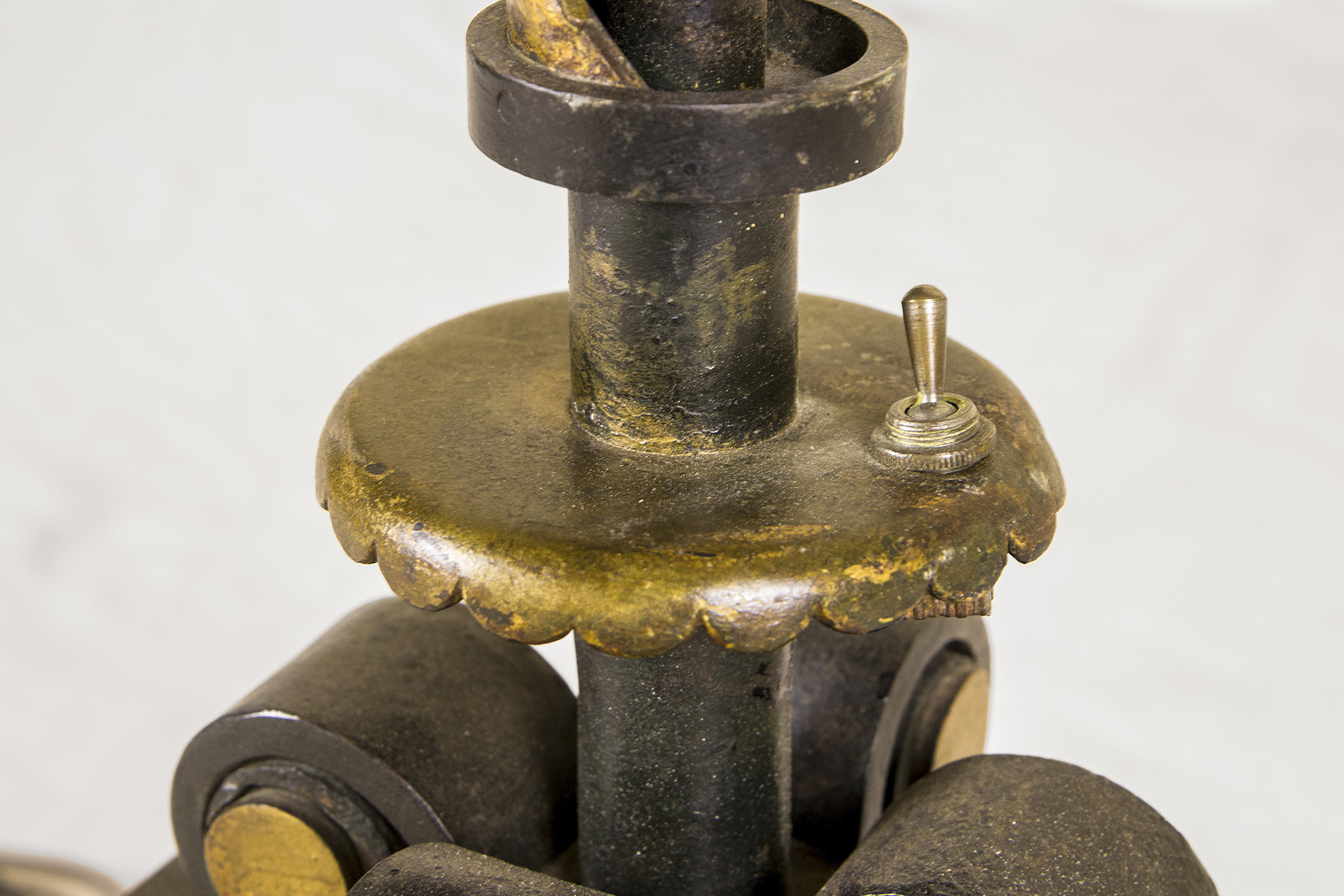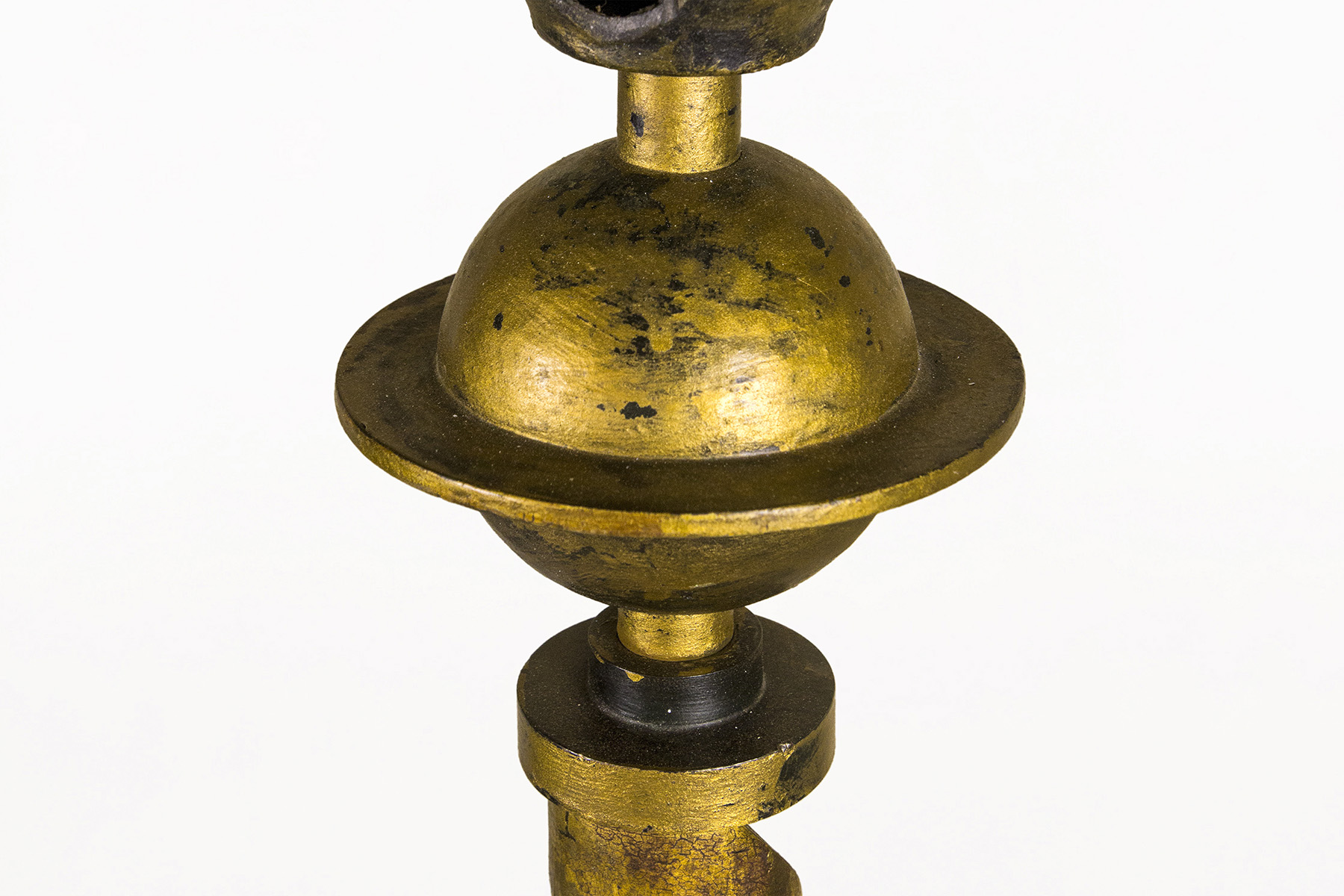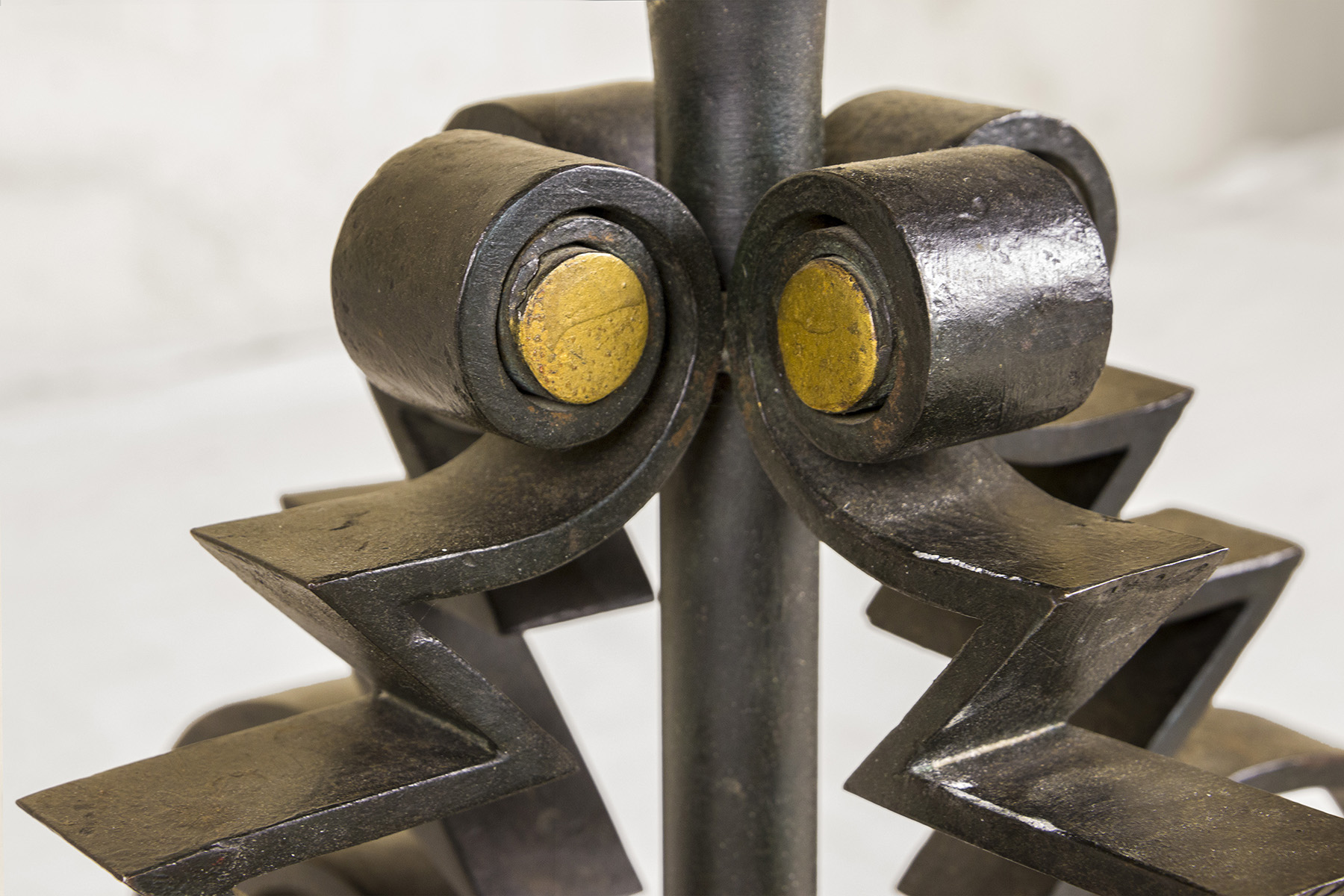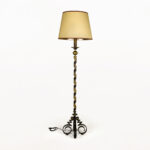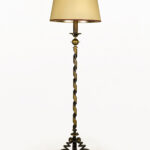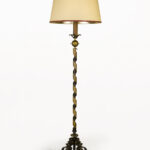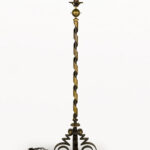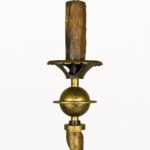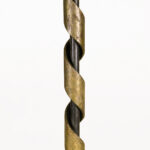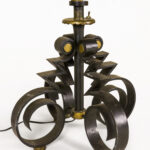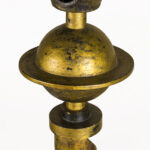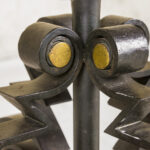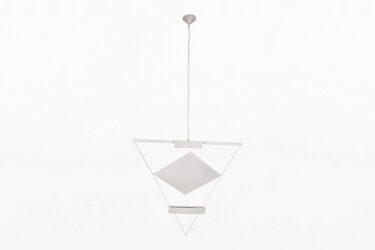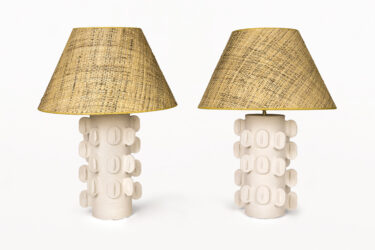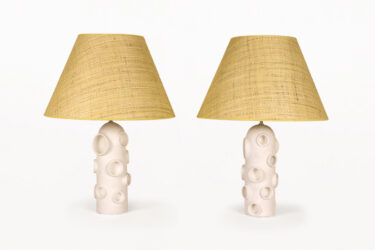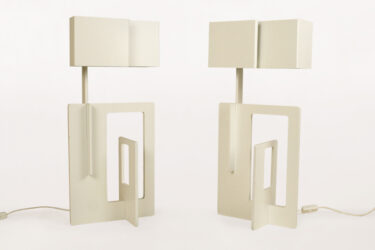WROUGHT IRON FLOOR LAMP BY GILBERT POILLERAT, Circa 1940, France
DESCRIPTION: WROUGHT IRON FLOOR LAMP BY GILBERT POILLERAT, Circa 1940, France. Floor lamp by Gilbert Poillerat in patinated and gilded wrought iron, with a cylindrical shaft decorated with a twisted cut-out scroll, topped with a sphere highlighted by a disc. It rests on a quadripod base with scrolls connected to the shaft by four cylindrical elements. Bibliography: Gilbert Poillerat, Maitre Ferronnier, F. Baudot, Hazan ed., 1992, pg.210.
CONDITION: Good condition. Wear consistent with age and use.
DIMENSIONS: Height: 218cm (86in) Width: 60cm (24in) Depth: 60cm (24in) DIMENSIONS w/out LAMPSHADE: Height: 182cm (71.5in) Width: 43cm (17in) Depth: 39cm (15in)
REFERENCE: LP0031
ABOUT THE DESIGNER: Gilbert Poillerat (1902-1988) trained at the École Boulle, where he discovered metalworking. It was a revelation. Graduating in 1921, he joined the workshops of Edgar Brandt, a prominent French arms manufacturer and ironworker, where he remained for six years. From 1928, while working for Baudet, Donon et Roussel, a major elevator and metal construction company, he presented his creations under his own name. Deeply classical by nature and respectful of the old masters, his taste tended toward the forms of the Grand Siècle. The era was characterized by the gradual abandonment of the cult of the right angle in favor of curves and convolutions, which suited him perfectly. From 1935 onward, he received prestigious commissions, such as the doors of the Palais de Chaillot, the gates of the Bibliothèque Nationale, and the light fixtures for the Eiffel Tower restaurant. But the young ironworker sometimes strays from the monumental to apply his multiple talents to a few objects: andirons, lampposts, small interior grilles, screens or figurines that refer to the productions of ironworkers of yesteryear. At the end of the 1930s, Gilbert Poillerat already established himself as the leading ironworker of his generation. In 1950 Caillette’s work was discovered by George Charron, a major French furniture manufacturer. Caillette collaborated as a designer with Alain Richard, Genevieve Dangles and Joseph-André Motte, who called themselves “Group 4”. They created simple designs using materials such as plywood, plastic, rattan, and formica to create affordable modernist designs for mass production. In 1952 Caillette was awarded the René Gabriel prize, and in 1962 won the silver medal at the Milan Triennale. He designed furniture for Charron until 1972. Cailette died in 2005
ABOUT THE STYLE: Art Deco, short for the French Arts décoratifs is a style of visual arts, architecture, and product design, that first appeared in Paris in the 1910s and flourished in the United States and Europe during the 1920s to early 1930s. Art Deco has its origins in bold geometric forms of the Vienna Secession and Cubism. From its outset, it was influenced by the bright colors of Fauvism and of the Ballets Russes, and the exoticized styles of art from China, Japan, India, Persia, ancient Egypt, and Maya. During its heyday, Art Deco represented luxury, glamour, exuberance, and faith in social and technological progress. The movement featured rare and expensive materials, such as ebony and ivory, and exquisite craftsmanship. It also introduced new materials such as chrome plating, stainless steel and plastic.

